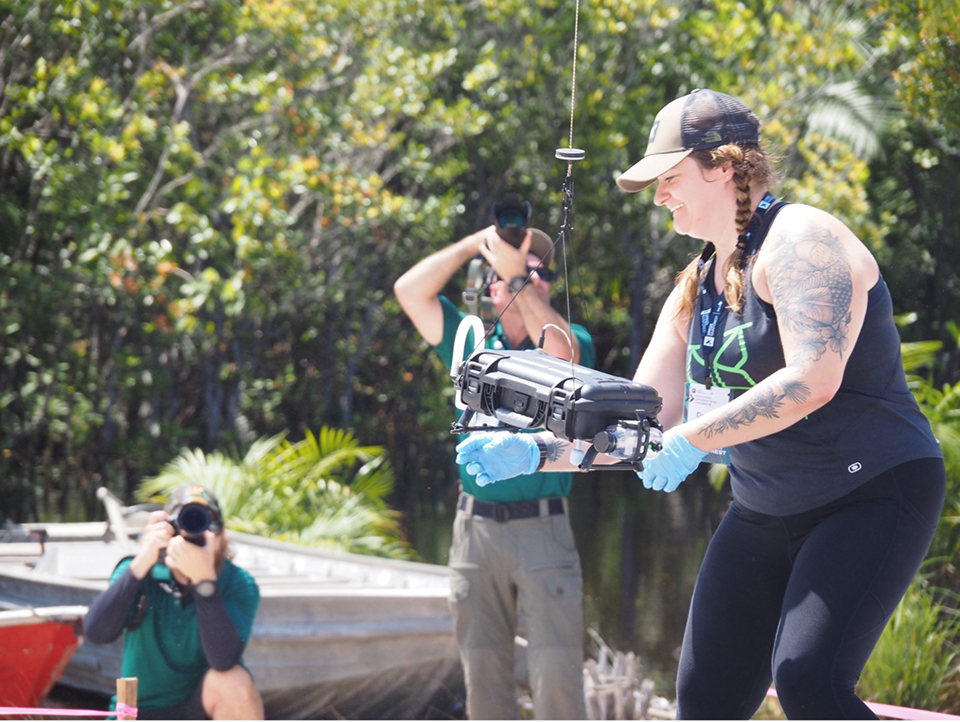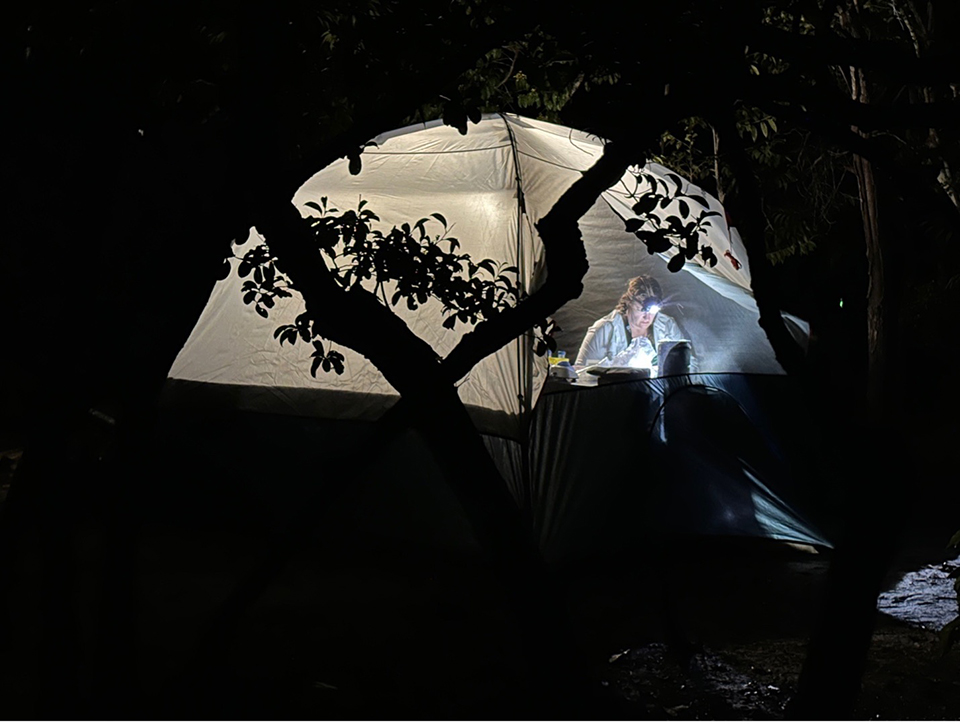
–Story by Laura Ferreiro
Imagine doing extensive research on the Brazilian rainforest and thoroughly assessing its biodiversity without setting foot in the rainforest itself. This is what CSUN alumna Denita Weeks did as part of a team that used drones, cameras, audio recorders and other remote technology to collect DNA, water and air samples to better understand the animals that live there and their unique environment.
As a result of this groundbreaking work, her team of 60 researchers, engineers, biologists and entrepreneurs from all over the world won the coveted $5 million XPRIZE – a five-year, $10 million competition with the aim of enhancing understanding of the diverse rainforest ecosystem. Three other teams also received prize money.
“This was such an amazing thing to be a part of,” said Weeks M.S. ’13, (Biology), now an associate professor of biology at Colorado Mesa University. “I contributed to something in rainforest conservation in a very meaningful way by advancing this technology and making it accessible for the people who live in these places.”
Solving Big Problems
XPRIZE is an organization that designs competitions for scientific solutions that address humanity’s greatest challenges. The XPRIZE Rainforest competition was sponsored by the Alana Foundation, a philanthropic organization that supports initiatives in the areas of environment, inclusive education and health science research.
Weeks’ team, Limelight Rainforest, was organized by researchers at Colorado Mesa University. Its members came from around the world, including indigenous and local community members. It included several sub-teams with their own specialties, including audio, visual, computer science, and drone technology.
The five-year rainforest competition started with 300 teams in 2019. In July 2024, Weeks’ team competed in the finals by exploring remote forest near Manaus, a city in the Brazilian state of Amazonas in northwestern Brazil. The task at finals was to rapidly assess the biodiversity of 100 hectares of rainforest in 72 hours — including field collection, data analysis, and report writing — without stepping foot into the plot.

The team used drones to deliver a sampling platform of recording devices and sampling tools to collect a wide range of data. Weeks explained that gathering samples by drone allowed them to access the forest’s canopy, a difficult-to-reach area that has been less explored than other areas of the rainforest. Using advanced remote technology also helped prevent the physical presence of human beings from scaring animals away.
“There are so many applications for this data,” Weeks said. “You can use DNA to find out which species have been there recently. We can also use it to discover new species and uncover human disease-causing organisms.”
Weeks served as the DNA sequencing lead on an all-female DNA team.
“Our DNA team broke some records and pushed limits of technology use that are still blowing my mind,” Weeks said. “In 24 hours, we generated 27 million sequencing reads from eDNA and insect tissue. I was able to sequence 5 million of those by myself on the shoreline of an Amazon River tributary using car batteries to run Starlink and other equipment.”
Working around the clock with hardly any sleep, Weeks stayed on the beach along a tributary of the Rio Negro River overnight to collect all the field data within a 24-hour window. She and her team, who worked from a pop-up lab about an hour away, had to analyze the data and write reports within 48 hours.
“We wanted to demonstrate to the judges that we could do the complete DNA pipeline efficiently in the field,” Weeks said. “As soon as samples came in on the drone, we analyzed them on the beach.”
Formative Experiences

Weeks came to CSUN’s College of Science and Mathematics for her master’s degree after earning a bachelor’s in biology from Grand Valley State in Michigan. She followed her CSUN degree with a doctoral degree from the University of Memphis in 2018. She joined Colorado Mesa University in 2019.
Weeks said that her experience as a graduate student at CSUN working with biology professor Robert Espinoza helped pave the way for her successful career.
“Working with Dr. Espinoza helped expose me to the unique world of international biological research and I’m grateful for that,” she said. “Getting to have those experiences early on in my career was pivotal. Also, in the tropical field course in biology, I got to go down to Ecuador for seven weeks while I was at CSUN. It exposed me to research in the tropics and I knew it was something I wanted to be a part of.”
Espinoza said he has been thrilled to witness all that Weeks has achieved in her career.
“I’m very proud of what Denita has accomplished, not just in [the XPRIZE competition], but from the time she left here,” Espinoza said. “She’s doing really good work.”
Helping students pursue their interests and turn them into a thriving career is common practice at CSUN.
“We do whatever we can to prepare students to do whatever they want to do next,” Espinoza said. We try to gear their training so they’re getting the most out of their experience here and can take the next step in their career trajectory.”
Now that the intensity of the competition is over, Weeks said she’s excited to see some of the prize money go back into the mission of getting her team’s technology into the hands of the people who live in the rainforest. The work to understand and preserve the rainforest can enable new medical discoveries, provide value to local eco-tourism, preserve indigenous culture, and perpetuate the forest’s beneficial impact to the global ecosystem.
“The hope is that this type of rapid assessment of biodiversity will provide value, monetizing the protection and preservation of a rainforest over cutting it down for agriculture,” she said. “Left intact, we can make new medical discoveries, provide value to local eco-tourism and preserve indigenous culture. Intact rainforest also provides ecosystem services such as clean air and water, climate regulation, carbon sequestration and pollination—all services that contribute to global ecosystem and human health.”




Comments are closed.